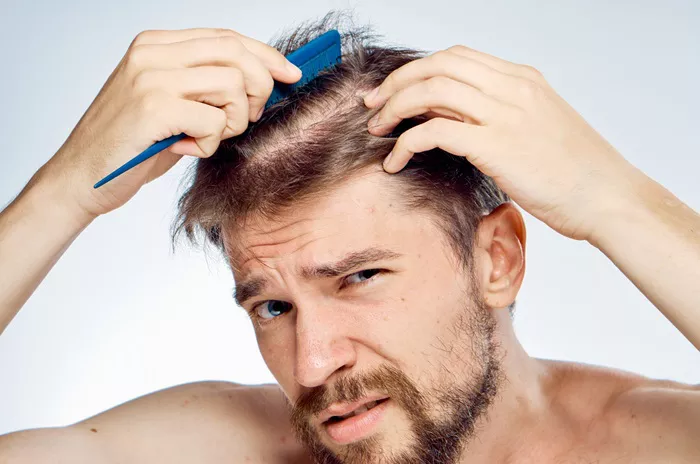Researchers at North Carolina State University have identified a groundbreaking microRNA, miR-218-5p, that could transform hair regeneration treatments. This microRNA plays a critical role in regulating follicle regeneration pathways, making it a strong candidate for future drug development aimed at combatting hair loss.
A Global Challenge
Hair loss affects millions worldwide, with existing treatments often proving costly and ineffective. Options range from invasive surgeries to chemical treatments, which frequently fall short of delivering the desired results. However, recent research has revealed that in balding areas, hair follicles do not vanish but instead shrink. If dermal papilla (DP) cells in these areas can be restored, the function of hair follicles could potentially be recovered.
The Role of DP Cells in Hair Growth
Ke Cheng, a distinguished professor of regenerative medicine at NC State’s College of Veterinary Medicine and a professor in the NC State/UNC Joint Department of Biomedical Engineering, has led a team addressing this challenge. Their work focused on culturing DP cells in two distinct environments: a traditional 2D culture and a 3D spheroid culture. The latter setup more accurately replicates a cell’s natural microenvironment.
The team tested hair regrowth in a mouse model using three different treatments: 2D-cultured DP cells, 3D spheroid-cultured DP cells within a keratin scaffold, and the popular hair loss treatment Minoxidil. The results were striking. In a 20-day trial, mice treated with the 3D spheroid DP cells achieved 90% hair coverage by day 15.
Cheng’s Key Insights
Cheng explained that the 3D cells in a keratin scaffold performed best because the spheroid environment mimics natural hair growth conditions, while the keratin scaffold anchors the cells to the necessary site.
The study further revealed that exosomes from the 3D spheroid-cultured DP cells contained miR-218-5p, a microRNA that enhances the molecular pathway involved in hair follicle growth. When miR-218-5p levels were increased, hair growth was stimulated, whereas inhibiting this microRNA caused follicles to lose function.
“While cell therapy with 3D cells could be effective for treating baldness, it involves growing, expanding, preserving, and injecting those cells into the scalp,” Cheng said. “Using miRNAs, however, presents a promising alternative. These molecules could be used in small molecule-based drugs, potentially allowing for the development of creams or lotions with fewer complications.”
Cheng noted that future studies will focus on miR-218-5p as a standalone treatment for promoting hair growth.
Addressing the Emotional Toll of Hair Loss
Hair loss not only causes physical change but can also result in emotional distress, affecting self-esteem and overall well-being. It can be triggered by various factors, including genetics, hormonal changes, medication, or medical conditions. While existing treatments like minoxidil and finasteride can slow or halt hair loss, they do not always lead to regrowth. Hair transplant surgery is another option, though it is expensive and carries risks like scarring and infection.
This new research offers hope. By identifying miR-218-5p as a potential treatment target, the study opens the door to more effective, less invasive solutions. The potential to create treatments that go beyond slowing hair loss and actively encourage regrowth could significantly improve the lives of millions affected by this condition.
A Path Forward for Drug Development
The identification of miR-218-5p is a crucial step forward in hair regeneration research. Next steps include conducting additional studies to evaluate the safety and effectiveness of miR-218-5p-based treatments for hair loss. The goal is to develop new therapies that are more accessible, less invasive, and more successful than current options.
The implications of this research are vast, as hair loss affects individuals’ quality of life and mental health. New treatments could offer a substantial improvement over existing solutions, making hair regeneration a more attainable goal for those struggling with hair loss.
Groundbreaking Study Published in Science Advances
The findings of the North Carolina State University research were published in the journal Science Advances. The study was supported by grants from the National Institutes of Health and the American Heart Association. Ke Cheng served as the corresponding author, while postdoctoral researcher Shiqi Hu was the lead author.
This research also benefited from resources at the Analytical Instrumentation Facility (AIF), which was supported by the National Science Foundation (DMR-1726294). The AIF is part of the North Carolina Research Triangle Nanotechnology Network (RTNN), a hub within the National Nanotechnology Coordinated Infrastructure (NNCI).
This innovative work on miR-218-5p holds the potential to revolutionize hair loss treatment, offering a brighter future for those affected by this common condition.


